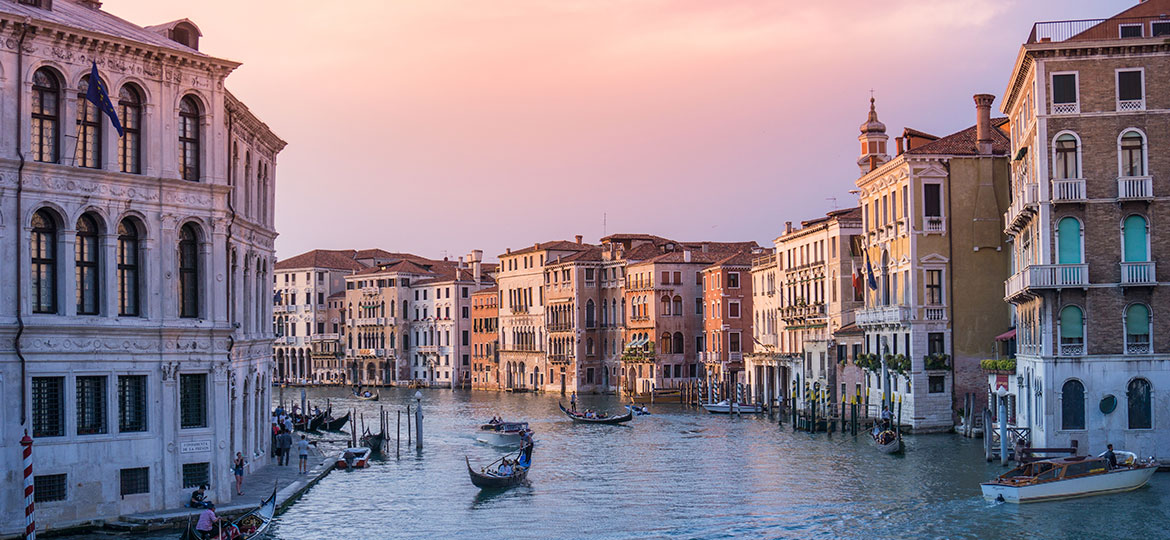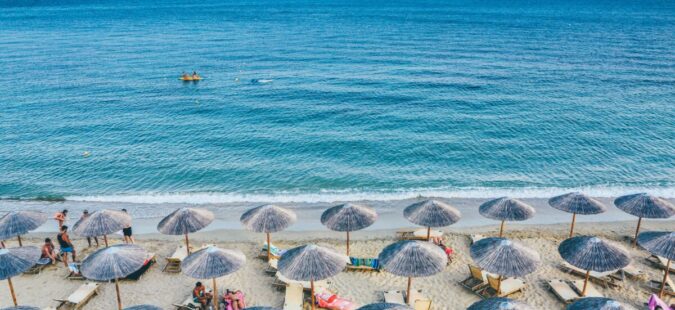
PPPs as the solution to the water shortage in the Mediterranean region
The Mediterranean Sea is at the crossroads of three continents and has been the cradle of some of the world’s great civilizations. These diverse cultural experiences have resulted in unequal levels of economic development and socio-political systems. With respect to water, the Mediterranean region is also marked by an extremely unbalanced distribution of water resources. Water scarcity is concentrated mainly in the southern and eastern Mediterranean and water demand has surged in recent years due to population growth and the development of economic activities such as tourism and food and textile production.
The intensive extraction of aquifers has exhausted the surface and groundwater resources and led to the intrusion of seawater into coastal aquifers. Water demand by all sectors of the economy doubled to 280 km3/year over the 50 years to 2007 and therefore will currently be considerably higher. Water use efficiency is far from satisfactory, especially in agriculture, and there is growing demand for irrigation water in countries such as Algeria, Egypt, Morocco, Syria and Turkey. According to expert estimates, developing countries use twice as much water per hectare of irrigated land as industrialized countries even though their yield is three times lower due to inefficient irrigation methods and high evaporation rates, etc., resulting in deterioration of the water quality.
Moreover, water quality is strongly affected by pollution due to intense human activities (industry, tourism, etc.) and the concentration of population in urban and coastal areas. The Mediterranean region covers 1.75 million km2 and supports around 446 million inhabitants (7% of the world’s population). It is experiencing rapid, unbalanced demographic growth and increasing rural-urban drift. The increasing poverty in the urban centers is directly connected to water and its effect on health.
According to UN estimates, the population of the Mediterranean basin will grow to between 508 and 579 million by 2025. The population of the coastal areas had a population of 143 million in the year 2000, which represented 33% of the region’s inhabitants, a figure that is expected to reach 174 million by 2025. This urbanization of coastal areas is also having a negative impact on the demand for and use of water resources caused by uncontrolled developments and infrastructures, sewerage, urban runoff and growing quantities of solid waste.

The fact that water efficiency remains very low throughout the Mediterranean region is an added difficulty: leaks and misuse account for nearly 40% of the total water demand. These losses are mainly due to inefficient network maintenance and operation in addition to the poor irrigation techniques.
Another major challenge as a consequence of unsustainable water resource use in the Mediterranean basin is the loss of wetlands and aquatic ecosystems that play a major role in conserving biodiversity and mitigating climate change.
In view of the real situation – that the supply of natural water no longer meets the growing demand in several countries in the region – unconventional water resources such as wastewater reuse and desalination are becoming increasingly important as additional sources to ensure water availability. Improving the performance of unconventional water sources requires better planning and regulation, coordinated investment, monitoring of operations, enhanced asset management capacity and mitigation of possible negative impacts on coastal areas where required.

In the Mediterranean region, in spite of the significant allocation of funds and inflow of aid, countries are struggling to secure the financial resources required to implement water-related strategies and plans. The lack of a sound governance framework limits the quality and sustainability of the water and sewerage sector. Poor management, low investment and lack of capacity at the national and local levels also hamper efficient administration and inflow of funding, especially from the private sector. At the same time, political unrest in the region means that socio-political reforms are urgently needed.
However, the growing demand for adequate water supply and for greater participation by all parties, both public and private, is currently provoking a significant change in the water project funding model.
Until a few years ago the engineering, procurement and construction (EPC) model was the dominant type of procurement in the water sector when a utility or public authority required a new water infrastructure to provide service to its customers. Under this model, financing of both the preliminary studies and the documentation from prequalification to contract award (including all technical, legal and surety procedures) and the final investment and operation of the plants were assumed by the contracting utility or authority. Due to the predominant involvement of public players in the EPC model it requires more thorough cost control which leaves ever-narrower margins for companies, and this is provoking a change of trend towards the public-private partnership model.
After the recent financial and economic crisis, many governments opted to increase public spending on drinking water and wastewater treatment as a means of stimulating the economy while the boom in the sustainable energy and natural resource markets between 2010 and 2014 created interest on the part of private capital in the water sector all over the world. In the post-crisis era, many governments, including those in the Mediterranean region, lack the funds required to finance investment in water. Consequently, they have attempted to make the sector more attractive for private investment.
A PPP (Public-Private Partnership) is a procurement model that combines public and private resources to enable large-scale infrastructures. Under this model, a private entity provides financial and human resources for the construction and operation of an asset in exchange for the long-term operating and maintenance rights. The transaction is implemented through a water purchase contract for which the owner pays a rate for the daily water supply over a long-term period (20-30 years). After this concession period, the asset is returned to the public entity.
The main advantage of public-private partnerships is that the human, financial and technical resources are shared, which enables optimal distribution since the most qualified organizations are responsible for implementing the project, which in turn has a favorable impact on the efficiency and cost of the project. There are also other advantages that are enabling the PPP procurement model to expand in the water sector and specifically in the Mediterranean region:
- They attract private capital to develop larger projects, enabling governments to avoid excessive indebtedness since they transfer it to the rate paid for the use and consumption of the resource.
- Wider management and operation experience are brought to the project since it is implemented by companies with experience in the specific sector and which compete on the market.
- They enable better access to the infrastructures by citizens.
- They distribute the responsibilities, risks and roles, which are allotted more efficiently to the stakeholders best fitted to perform them.
- They optimize efficient use of resources by deploying private management methods, which usually has valuation tools available to set and achieve objectives.
- By delegating daily operations to the private sector, governments can focus on their core functions of legislation, planning and regulation.
- They drive local and international employment.
- They foster training and new knowledge in the community.
- They enhance social responsibility.
- They drive innovation as a fundamental pillar of efficient technological and managerial improvement.
However, participation of the private sector in water distribution systems remains a sensitive political issue, especially in Europe and the Mediterranean. This means that the majority of the opportunities are in the construction, concession and operation of water treatment assets rather than direct supply to the end user. Private participation in Mediterranean region began with desalination projects in the first decade of the century, exemplified by emblematic programs such as the one developed by the government of Algeria and led by Sonatrach.
The market is currently undergoing restructuring, providing more opportunities for the private sector and international players to enter countries that were previously closed to private investment. This is the case in Saudi Arabia, which is analyzing new PPPs to enhance the efficiency and performance of its sewerage and wastewater treatment systems. Opportunities include 2.85 million m³/d of new desalination capacity and 1.57 million m³/d of treatment capacity in new wastewater projects.
Saudi Arabia aims to reuse more than 65 percent of its water by 2020 and more than 90 percent by 2040, transforming and upgrading its existing wastewater treatment assets and planning new reuse plants for the industrial sector. According to Global Water Intelligence estimates, Saudi Arabia’s reuse market, worth more than $4.3 billion, will be the third largest in the world. As part of the strategic objectives of the National Transformation Program, Saudi Arabia seeks to increase the proportion of desalinated water produced by private operators from 16 to 52 percent by 2020 and to expand drinking water and sewerage services from 42 to 70% of its cities.
The United Nations Sustainable Development Goal Six is to ensure availability and sustainable management of water and sewage for all. By 2030 the goal is to achieve universal and equitable access to affordable drinking water. These public-private partnerships enable extension and improvement of access to drinking water, assurance of its quality and optimization of its service and administration through management, technology and financing tools capable of making this scenario a reality.
Based in the Middle East and Spain, Almar Water Solutions, among others, knows the water situation in the Mediterranean regions at first hand. Our team has more than 20 years experience in the sector and has implemented projects in several countries in the area. We are currently working to provide sustainable solutions to the problems of water scarcity, pollution and lack of funding for renewable water production and treatment proposals in the Mediterranean.
References:
- Global Water Market 2017, Global Water Intelligence.
- The Water Issue in the Mediterranean, Eugenia Ferragina.
- Global Water Partnership Mediterranean.
- U.S. – Saudi Arabian Business Council.

